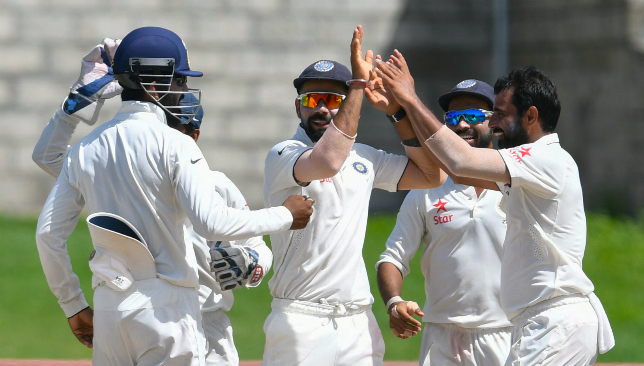
It has been a remarkable month for Asian teams in Test cricket. Pakistan completed a remarkable comeback in the four Test series in England, clinching the final match in emphatic manner at The Oval to square the series at 2-2.
The Sri Lankans gave the then No1 Test team Australia a thorough thrashing to hand the men from Down Under their ninth straight Test defeat in Asia that also saw them slip from the top of the table.
And the Indians, under Virat Kohli, completed a straightforward series win in the Caribbean. All three performances are commendable in their own right. Pakistan were visiting England with spot fixing culprit Mohammad Amir in the squad.
It was going to be a test of character against a strong England side that had in-form players like Alastair Cook, Joe Root, Stuart Broad and James Anderson. England fought back splendidly after the reversal in the opening Test but Pakistan had made enough inroads and leveled the series after a spectacular double century by Younis Khan.
In the end, the conditions turned out to be ideal for the visitors as leg-spinner Yasir Shah picked up 19 wickets from four matches to negate the threat of Chris Woakes (26 wickets) and also make up for the less than incisive efforts of Amir.
In Sri Lanka, the Australians must have fancied their chances against a highly inexperienced home team. But one left-arm spinner was enough for the Sri Lankans to brush aside the Aussies, with Rangana Herath picking up an incredible 28 wickets from three matches on pitches tailor-made for him.
The Indians had, ostensibly, the easier task as West Indies in Test cricket are not the most challenging opposition. Even so, they had their backs against the wall in the third Test, reduced to 126 for five before centuries from keeper Wriddhiman Saha and spinner Ravi Ashwin helped them post a competitive total and then eke out victory.
India dethroned Australia as the No1 Test team but that scenario is likely to change soon as they needed to win the final Test against the Windies to secure the top spot. With that unlikely to happen, Pakistan will become the No1 Test side.
These are good results for Asian teams. Pakistan have shown that they can challenge the best in their own den while Sri Lanka can still pack a punch despite having only six players (Angelo Mathews, Dinesh Chandimal, Kaushal Silva, Dimuth Karunaratne, Herath and Suranga Lakmal) with any worthwhile Test experience.
And the Indians did well to force a result in the third Test despite rain ruining the entire third day’s play. For now, it looks like India and Pakistan will be among the top Test teams while Sri Lanka too can climb up the table (currently sixth) if they keep showing the same level of fight.
But in the medium to long term, I feel it is India that can look to consistently challenge teams in Test cricket. Pakistan have no doubt a disciplined and experienced Test side but the two main pillars their batting are close to the end of their careers.
Misbah-ul Haq is 42 while Younis will turn 39 soon. Take those two names out of the line up and suddenly a 14,000 odd Test-runs sized hole appears in the middle order which will take a long time to fill.
The Sri Lankans are still struggling to come to terms to life after Kumar Sangakkara and Mahela Jaywaradene. Once their 38-year-old spin maestro Herath calls it a day, which he might sooner rather than later, even their bowling might begin to wane.
India, therefore, are in a much better position to chart the way forward because they have already lost their Test heavyweights. A fresh journey under a new leader has begun and the results are encouraging, with series wins against Sri Lanka, South Africa (at home) and now in the Caribbean.
NOT UPTO THE MARK
It has started raining at the Queen's Park Oval and the the covers are back on. #WIvIND pic.twitter.com/MyIEZkuhTs
— BCCI (@BCCI) August 20, 2016
The fourth Test between India and West Indies in Trinidad had a lot riding on it. India needed to win the match to remain on top of the ICC rankings but a poor outfield has forced play to be abandoned on three days.
Sure, there was rain in Port of Spain but there was also two days of hardly any precipitation coupled with strong sunshine. But despite three days of clear weather at the start of play, no cricket was possible, which is inexplicible in 2016.
Test venues across the world have upgraded their faccilities to ensure play is possible as soon as rain stops. If not, the least they do is cover the entire playing area. But the Queen’s Park Oval had neither, which resulted in farcial scenes with ground staff breaking the outfield with pitchforks and attempting to dry the area using blowers.
When most nations are looking to repackage Test cricket and offer an attractive product to fans more interested in T20 cricket, such scenes undo much of the hard work. Test venues should join the attempt to lure viewers, not turn them away due to inadequate infrastructure.